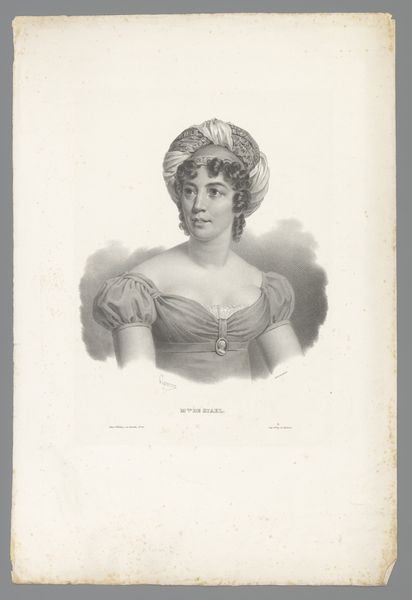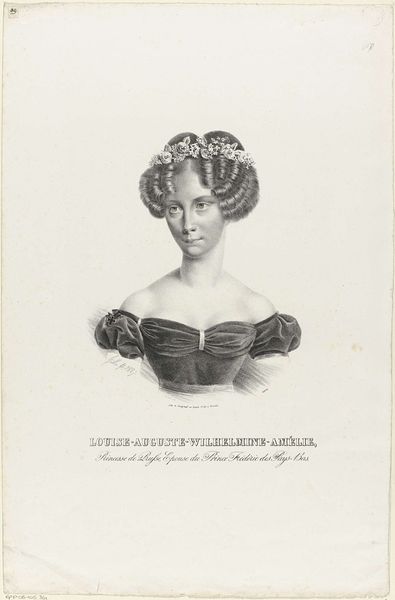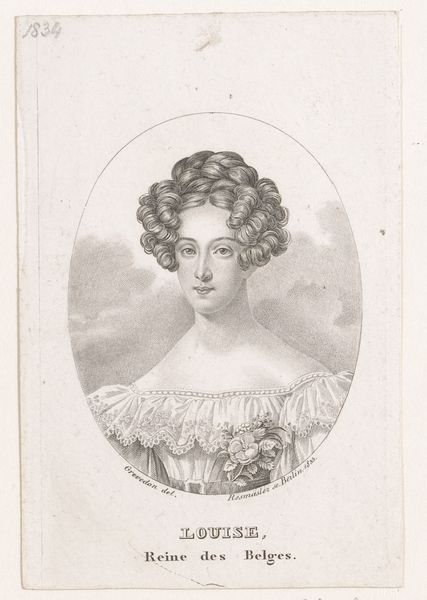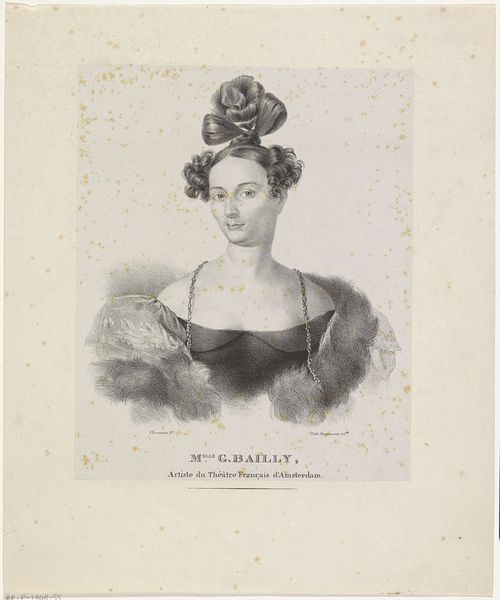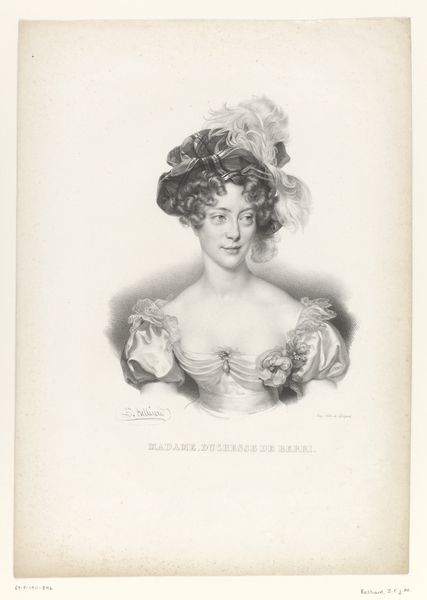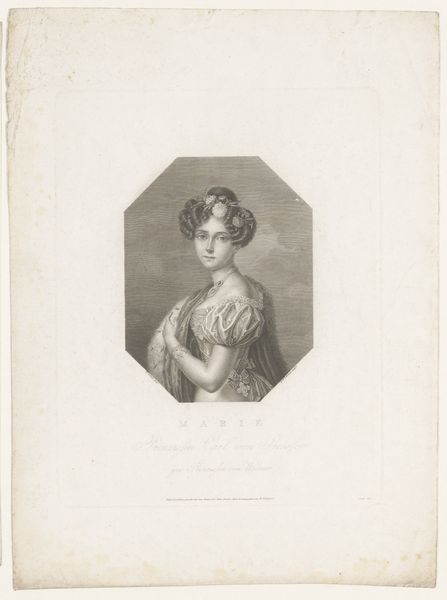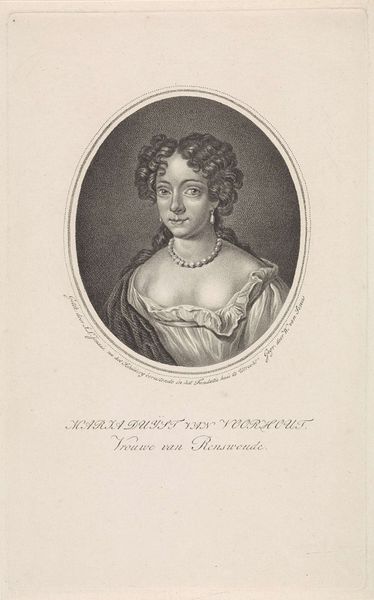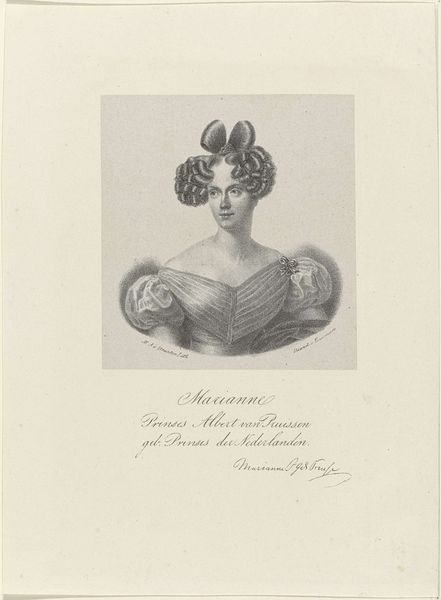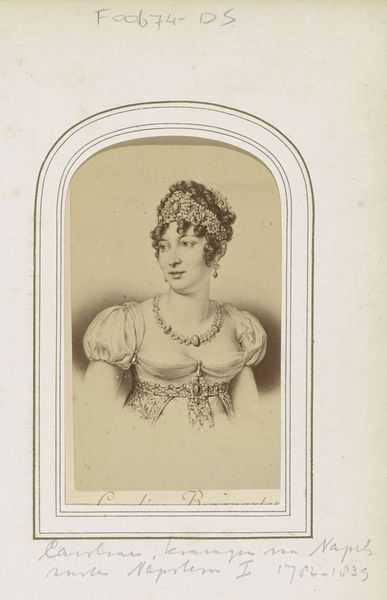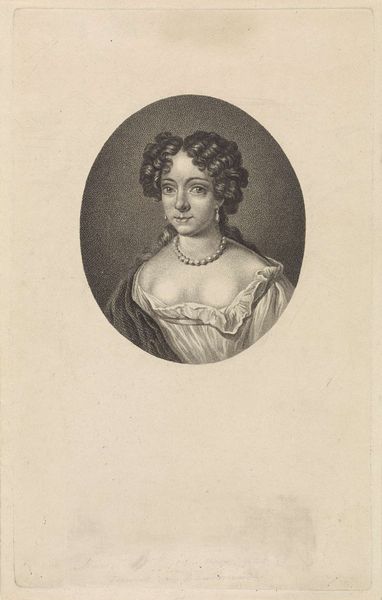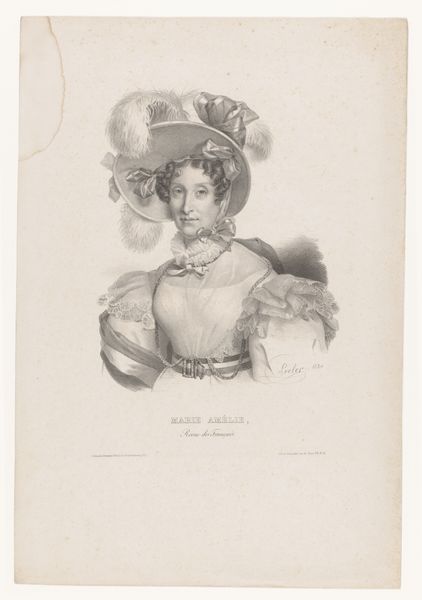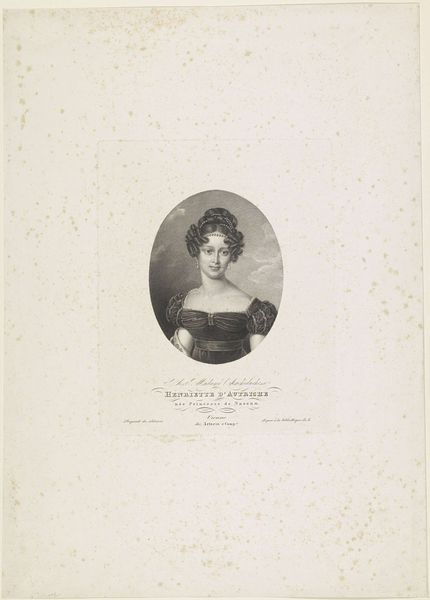
print, engraving
#
portrait
#
neoclacissism
# print
#
old engraving style
#
history-painting
#
engraving
Dimensions: height 115 mm, width 76 mm
Copyright: Rijks Museum: Open Domain
Editor: So, here we have "Portrait of Marianne, Princess of the Netherlands," an engraving from the 1830s. It strikes me as rather formal, even austere. What do you see in this piece beyond the initial impression? Curator: I am drawn to how the artist uses established symbols to portray Princess Marianne. Her elaborate hairstyle, almost a crown of curls, combined with the carefully draped fabric of her gown, suggests both status and an idealized femininity. What might those symbols have meant to viewers at the time? Editor: Well, the Neoclassical style was popular then, so maybe a connection to ancient ideals of beauty and virtue? Curator: Precisely. And the engraving process itself carries symbolic weight. It’s a medium of reproduction, making the Princess’s image accessible, disseminating her likeness throughout society. Doesn't this remind you of other iconic female figures reproduced in visual media throughout history? Editor: Now that you mention it, the formal pose does give her a sense of importance and timelessness, not unlike portraits of royalty through the ages. Are there symbols hidden in plain sight, right in front of us? Curator: Consider her direct gaze, the subtle emphasis on her features. What do you read from them? Editor: Confidence, maybe? Or is that what the artist *wanted* us to see, an attempt to control her image and project power? Curator: Excellent question. An image can simultaneously reflect and construct reality, shaping how the sitter and her lineage are perceived and remembered. Considering this print as a manufactured likeness has been a helpful starting point. Editor: It's amazing how much history and intent can be packed into what seems like a simple portrait. Thank you for walking me through it.
Comments
No comments
Be the first to comment and join the conversation on the ultimate creative platform.
